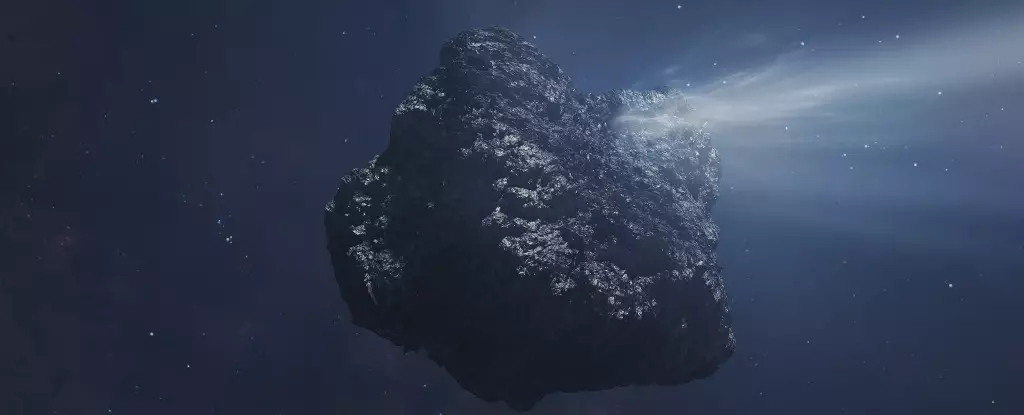In a startling revelation that has astronomers buzzing, Comet C/2014 UN271, known as Bernardinelli-Bernstein, is careening toward the inner Solar System. This colossal entity, stretching an astonishing 137 kilometers (85 miles) in width, dwarfs the infamous asteroid that caused the extinction of the dinosaurs by nearly 14 times. This is not just another space rock drifting through the void; it is a serious cause for concern, and for good reason. A comet of this magnitude raises numerous questions about the nature of celestial bodies and their potential impact on life on Earth, underscoring the fact that we are mere inhabitants of a fragile blue dot, often at the mercy of cosmic forces.
While the comet won’t reach closer than Saturn’s orbit during its closest approach on January 29, 2031, the ominous thought of such a massive object nearing our home planet is enough to send shivers down the spine. The fact that astronomers have detected significant outgassing of carbon monoxide only adds to the complexity of this celestial visitor. What new data will we glean before it hurtles past, and how will this shape our understanding of comets and their chemistry?
Molecular Mysteries Unveiled
Using advanced technologies like the Atacama Large Millimeter/submillimeter Array (ALMA) in Chile, scientists have begun unraveling the mysteries surrounding Comet UN271. The observations reveal explosive jets of gas that suggest a certain volatility in its icy composition. As astrochemist Nathan Roth explains, these observations provide insights into the dynamics of this enormous body as it continues its journey, pushing the boundaries of our understanding of what comets are capable of.
These explosive outbursts demonstrate not only the comet’s size but also hint at the complexity of its surface and the chemical processes that occur as it approaches the Sun. The comet exhibits patterns of outgassing that raise critical questions about its future evolution, making its study more pressing for researchers and enthusiasts alike. How often do we encounter such large celestial bodies, and what does their behavior tell us about the formation of our Solar System?
Witnessing Cosmic Activity from Afar
The images and data acquired from the March 8 and March 17 observations are remarkable milestones in our understanding of this enormous comet. The fact that astronomers detected jets composed largely of carbon monoxide, along with signs of the comet’s coma, is nothing short of groundbreaking. This is the type of fieldwork that captures the imagination and reveals the untold stories of the universe.
Yet, this fiery spectacular won’t be gracing our skies with visible beauty. As much as we yearn for an opportunity to gaze at this mammoth visitor directly, it will remain hidden from the naked eye, only to be observed through the lens of advanced telescopes. This begs the question: why is it that despite technological progress, we remain barred from experiencing the awe of such cosmic phenomena up close? We live in an age where instant gratification is king, yet the universe continuously reminds us to exercise patience and humility.
The Dichotomy of Danger and Discovery
In contemplating Comet UN271, one can’t ignore the fine line between awe and anxiety it inspires. The science community is rightly excited about the potential information that can be gathered, yet there remains an underlying current of existential threat. The sheer scale of the comet stands as a reminder of our vulnerability in the grand mechanism of the universe.
While we celebrate the advances in telescopic technology that allow us to study these celestial wonders, it’s equally unsettling to think of the natural disasters that could occur if these bodies were to alter their paths. The lessons of history echo loudly; we must remember that while the exploration of the universe may hold great promise, an apocalyptic scenario shaped by a misplaced comet is equally plausible.
In a time when scientific endeavor often surrenders to sensationalism, the study of giants like Comet UN271 presents an opportunity for nuanced discourse. How do we responsibly promote awareness of our cosmic neighbors while addressing the palpable fears they evoke? It is crucial to approach matters of celestial significance with respect for both the awe they inspire and the dangers they harbor.


Leave a Reply